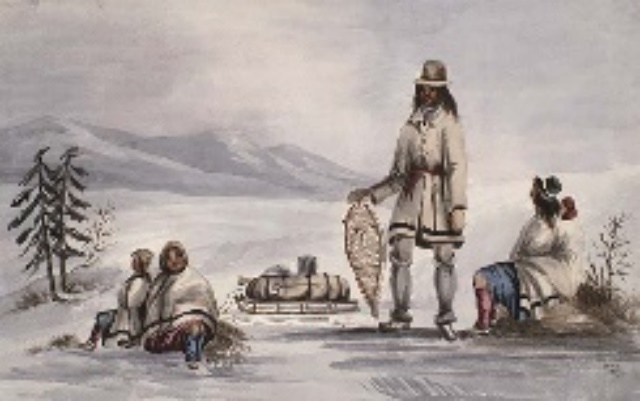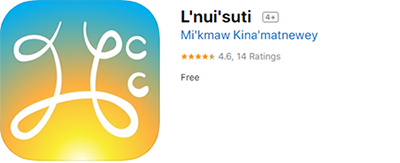Have students study a calendar that has the moon cycles marked. Now as a class create an Indigenous Peoples’ moon calendar.
Materials required: visuals or photos from magazines, found objects, a monthly calendar
Students will need to prepare some items before the lesson begins: for example, finding visuals or photos from magazines of the seasons, illustrations of things which occur in nature, pieces of coloured cloth that depict the seasons (found objects), acorns or coloured leaves. Using a variety of items, have each student choose a month and create a collage for an Indigenous lunar calendar that shows examples of activities or events that illustrate Indigenous relationships to the environment, or the student’s own ideas about a response to the moon cycles and the changing seasons. You can have the students use keywords, pieces of material, maps, quotations, photos and illustrations. Have each student share their found objects with their classmates and ask if they can identify the lunar month to which each object belongs.
Indigenous people counted time using thirteen months in every year. The moons are generally named after activities or occurrences that happen during each particular month.
Míkmawey Calendar
The Míkmawey Calendar begins on Spring Equinox, either March 20 or March 21 on the Gregorian Calendar. It follows the cycle of the 13 Moons, with each Moon having 28 days. There is an “intercalary day”, an extra day that does not appear on the calendar, between Apunknajit 28 and Kjikús 1, known as the Year End Day, which is a day of rest and celebration. Every four years there is a Leap Day, which follows after Year End Day.
| Mi’kmaw Name | English Translation |
|---|---|
| Kesikewiku’s | Chief moon time |
| Punamuiku’s | Tom cod spawning time |
| Apiknajit | Bright sun time |
| Si’ko’ku’s | Maple sugar time |
| Pnatmuiku’s | Birds laying eggs time |
| Sqoljuiku’s | Frogs croaking time |
| Nipniku’s | Trees fully leafed time |
| Pe’skewiku’s | Birds shedding feathers time |
| Kisikewiku’s | Berry ripening time |
| Wikumkewiku’s | Mate calling time |
| Wikewiku’s | Animals fattening time |
| Keptewiku’s | Rivers starting to freeze time |
| Kjikús | Great Moon |

Using the Mi’kmaw calendar, what month would you say this picture shows?
Important note: Don’t hesitate to use the application “L’nui’suti” that follows. You can listen to and practice words in the Mi’kmaw language. After you’ve looked at this animation, you can listen to the names of the months of the year so you can practice.

Important note: Don’t hesitate to click on “Pause” in the progress bar while looking at the animation, so you can observe more details in the pictures or the illustrations.




